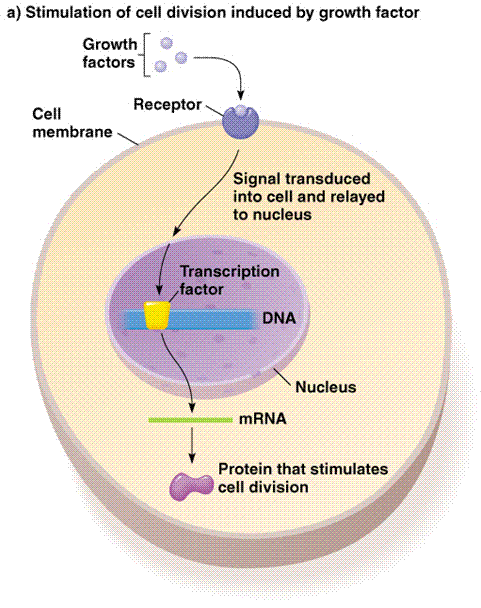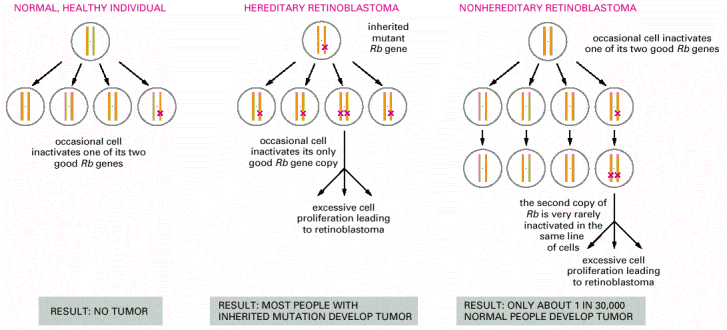Mode of Inheritance
Signal transduction controls a normal cell cycle. Growth factors will bind to cell receptors causing integral proteins to relay signals into the cell. There are two types of growth factors: those that stimulate cell division and those that inhibit cell division.When growth factors and growth-inhibiting factors balance favoring cell division, a healthy cell divides. However, when mutations arise in growth and growth-inhibiting factor genes, cells divide without constraint (cancer).

Retinoblastoma, like other cancers, is caused by genetic mutations. In this case the mutations are in the RB1 gene. Mutation can be sporadic meaning there is no hereditary cause ( 60% victims) of familiar (40% victims). Knudson's two-hit model is the theroy behind the mode of inheritance.

In the hereditary form, all cells in the body lack one of the normal two functional copies of the Rb tumor suppressor gene, and tumors occur where the remaining copy is lost or inactivated by a somatic mutation. Some individuals with hereditary retinoblastoma have a visibly abnormal karyotype, with a deletion of a specific band on chromosome 13. Deletions of this same locus are also encountered in tumor cells from some patients with the nonhereditary disease, suggesting that the cancer may be caused by loss of a critical gene in that chromosomal region(8).
In patients with the nonhereditary form of the disease, by contrast, the noncancerous cells show no defect in either copy of Rb, while the cancerous cells are again defective in both copies. These nonhereditary retinoblastomas are very rare, because they require the coincidence of two somatic mutations in a single retinal cell lineage, so as to destroy both copies of the RB1 gene.
There are 370 mutations described in the RB1 gene mutation database . Alterations have been found in 25 of the 27 exons. Sometimes a band of the chromosome13 is missing causing an inactivated RB1 gene. Physical characteristics of a missing band include: vertical indentation in the midline of the upper lip,prominent eyebrows, broad nasal bridge, bulbous tip of the nose, and large mouth with thin upper lip.
What are the chances?
Nonhereditary retinoblastoma requies two somatic mutations events in one cell. Obvsiously the chances of this happening are low (mutation rate of 2.3 x 10(-5)) Heredity retinoblastoma can be traced through a pedigree.